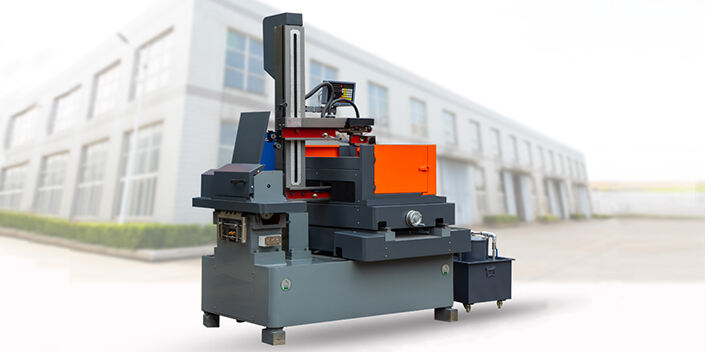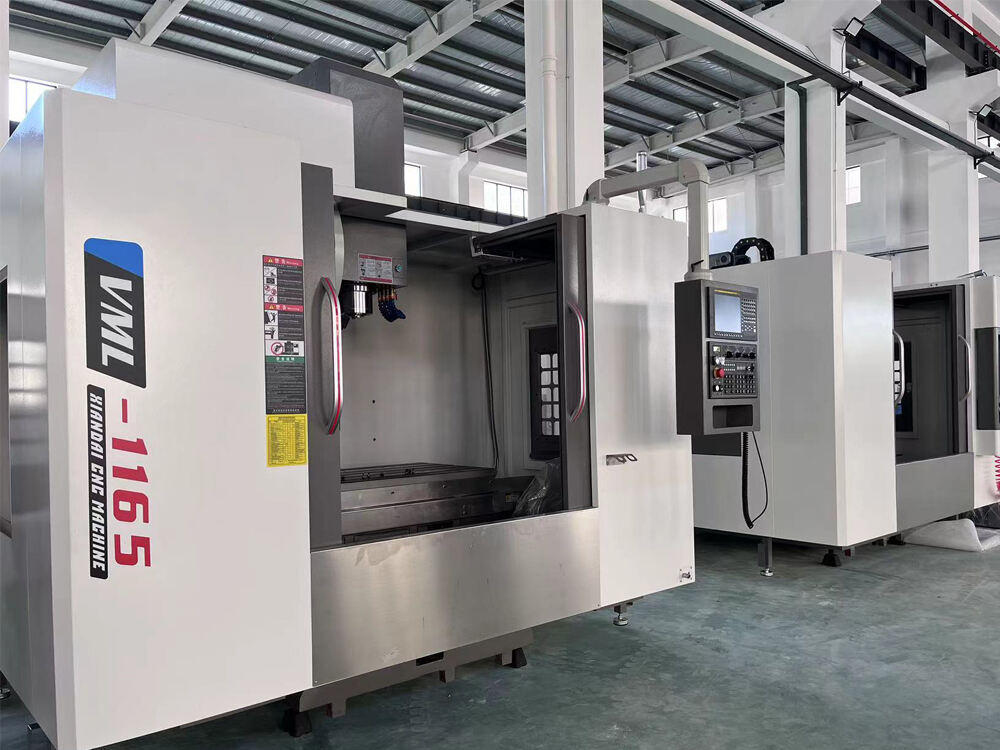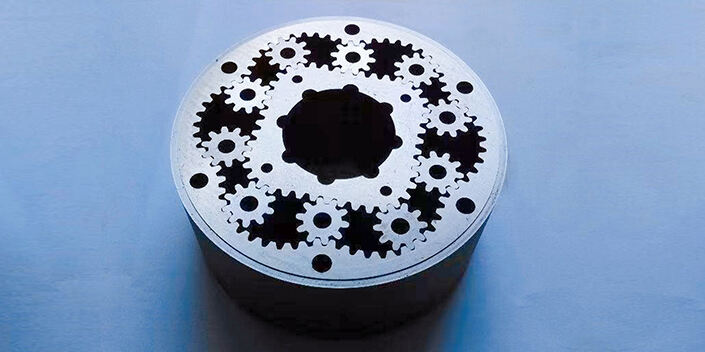How EDM Die Sinking Machines Work: Principles of Precision Spark Erosion
Sinker EDM (Die-Sink EDM) Process and Working Principle
EDM die sinking machines work by shaping conductive materials through controlled electrical discharges. This happens when a specially prepared electrode interacts with a workpiece sitting in dielectric fluid. Most electrodes are either graphite or copper, and they create the desired cavity shape by firing off thousands of tiny sparks every second. At voltages reaching around 300 volts, these sparks melt away material without any physical contact between parts. What makes this technique so valuable is its ability to produce incredibly detailed features. Think about those tight internal corners that measure less than 0.1 mm radius, or surfaces with finishes as smooth as Ra 0.4 microns. Traditional machining methods just can't match this level of detail without damaging the workpiece.
Role of Dielectric Fluid and Controlled Spark Erosion in Material Removal
Dielectric fluids made from hydrocarbons work as insulation between the electrode and workpiece gap, stopping unwanted arcing while also carrying away those tiny particles that get worn off during the process. When the fluid moves properly through the system, it can cut down on recast layers by around 40 percent when compared to older static methods. Today's EDM machines aren't just set and forget anymore. They actually change how long sparks last, anywhere from 2 to 200 microseconds, and adjust the space between components, typically between 5 and 50 micrometers. This dynamic adjustment helps achieve better material removal speeds sometimes reaching up to 500 cubic millimeters per hour while still protecting against heat damage that could ruin the finished product.
Electrode Design and Its Impact on Cavity Accuracy and Surface Finish
The shape and form of electrodes has a major impact on how accurate molds turn out. When there's even a small ±5 micrometer mistake in the tool design, this often gets magnified to around ±15 micrometers when working with tough materials such as tungsten carbide. Graphite electrodes made in multiple stages and having edges as sharp as 0.01 millimeters can produce surfaces so smooth they look like mirrors (roughness values between 0.1 and 0.2 micrometers). Copper based options tend to last longer during mass production runs because they resist wearing down better. Modern CNC systems that automatically adjust for tool wear help these electrodes last about 30% longer. This means manufacturers can maintain tight tolerances within ±2 micrometers over thousands of spark erosion cycles, sometimes reaching beyond 10,000 operations before needing replacement.
Machining Complex and High-Precision Mold Geometries with EDM
Creating intricate internal corners, blind cavities, and deep features
EDM die sinking machines are able to make those really intricate mold parts that just can't be achieved with regular milling techniques. The process involves using specially shaped electrodes along with controlled electrical sparks to erode material away. Manufacturers can actually get those internal corners down to less than 0.1 millimeter radius and drill out holes deeper than 50 mm into tough tool steels. For industries like automotive or aerospace where precision matters, this kind of capability becomes absolutely critical. Think about injection molds that need tiny cooling channels running through them, or medical devices where every micron counts when it comes to patient safety and comfort.
Achieving micron-level tolerances in hardened and delicate mold sections
The non-contact process eliminates tool pressure, enabling ±3 μm tolerances even in hardened steels (HRC 60+) and brittle materials like tungsten carbide. Sequential roughing and finishing passes maintain dimensional stability in thin ribs (≈1 mm thickness), where mechanical methods risk deformation or breakage.
Balancing surface roughness (Ra) and machining accuracy for optimal results
Advanced EDM generators adjust pulse duration and discharge current to achieve surface finishes down to Ra 0.1 μm while preserving ±5 μm profile accuracy. Multi-stage strategies combine high material removal rates (up to 400 mm³/min) during roughing with slow, controlled finishing cycles—critical for optical lens molds and high-gloss automotive components.
Superior Surface Quality and Accuracy in Mold Finishing Applications
Optimizing EDM Parameters for High-Gloss and Mirror-Like Mold Surfaces
Precision control of current (2–32A), pulse duration (2–500μs), and spark gap (0.01–0.2mm) improves surface roughness (Ra) by 40% over roughing operations. Adaptive spark monitoring adjusts parameters in real time to maintain Ra ≈ 0.4μm—essential for optical-grade injection molds requiring minimal gloss variation.
Surface Roughness (Ra) Improvement Techniques Using Fine-Finishing Cycles
Multi-stage finishing cycles with progressively smaller electrodes (0.1–0.5mm undersize) improve surface quality by 60–80% through:
- Reduced discharge energy (≈5μJ) for minimal crater depth
- High-frequency pulses (≥250kHz) to limit thermal damage
- Dielectric flushing optimization (0.3–0.6MPa pressure)
These techniques allow moldmakers to transition from Ra 0.8μm initial finishes to final Ra 0.2μm mirror surfaces in 3–5 finishing passes.
Case Study: High-Precision Automotive Mold Finishing via EDM Die Sinking Machine
A recent project involving automotive LED lens molds showed just how capable modern sinker EDM systems have become. These machines can produce surfaces with an Ra value around 0.15 microns and maintain positional accuracy within about plus or minus 2 microns across all 120 cavity features. When manufacturers switched to copper tungsten electrodes along with hydrocarbon based dielectric fluids, they saw something pretty remarkable happen. Manual polishing time dropped by roughly 40 percent without compromising on those tough automotive surface quality requirements. What's even more impressive is that throughout the entire process, form deviation stayed below 0.005mm in hardened tool steel rated at HRC 62. This kind of performance really highlights why EDM remains so important for producing high value molds in today's manufacturing landscape.
EDM for Hard-to-Machine Materials: Carbide, Tungsten, and Hardened Steel
Efficient Machining of Tungsten, Carbide, and Hardened Steel Molds
EDM die sinking machines handle materials well beyond HRC 65, including tough stuff like tungsten carbide and tool steels that are hardened up to around 60-62 HRC. Since there's no direct contact during the spark erosion process, tools don't deflect, which means we can create really accurate cavities even in cobalt bonded tungsten carbide. Traditional milling just isn't viable with this material because it tends to destroy cutting tools completely. For shops working with these hard materials, EDM typically cuts machining costs somewhere between 30% and 40% when compared to alternatives like laser cutting. That kind of savings makes a big difference in production budgets.
Graphite vs. Copper Electrodes: Performance, Wear, and Application Fit
| Electrode Type | Melt Point (°C) | Wear Rate | Best For |
|---|---|---|---|
| Graphite | 3,600 | 0.03 mm³/s | High-speed roughing cycles |
| Copper | 1,085 | 0.12 mm³/s | Fine-detail finishing |
Graphite electrodes are preferred for tungsten carbide due to their thermal stability in high-energy discharges. Copper is better suited for hardened steel molds requiring Ra ≈ 0.8 μm finishes, though its higher wear rate increases replacement frequency by 22%.
Recent Advancements in Electrode Materials Boosting EDM Efficiency
Hybrid copper-tungsten composites achieve 18% faster material removal in cobalt-rich carbide grades while maintaining ≈ 0.05 mm corner radii accuracy. Nanoparticle-infused dielectric fluids reduce arc gaps by 27%, enabling tighter tolerances (±5 μm) in hardened D2 steel tooling. These innovations address the historical trade-off between speed and surface integrity in conductive superalloys.
Industrial Applications and Advantages of EDM Die Sinking Machines
Critical uses in automotive, aerospace, and medical mold manufacturing
The EDM die sinking machine has become pretty much essential in any industry where super precise mold making is needed. Take the automotive sector for example these machines create those intricate injection molds used in fuel injectors and transmission components. Over in aerospace, technicians rely on them to machine tough materials like titanium for turbine blades that have those complicated internal cooling passages. The medical field isn't left out either, as manufacturers depend on this technology when crafting molds for surgical instruments and developing prototypes for artificial joints. According to a recent industry survey from 2023, around four out of five precision tooling shops turn to sinker EDM when working with hardened steels over 60 HRC hardness level. Makes sense really since traditional methods just can't match what these machines accomplish in such demanding applications.
Non-contact machining benefits: eliminating stress in thin-walled components
EDM works so well for delicate parts because there's no actual contact between the tool and what's being worked on. Think about those super thin aerospace brackets under 1mm thick or those intricate molds used in medical microfluidics. Compared to milling processes that can apply forces as high as 740 kN per square millimeter, EDM avoids warping issues entirely by using controlled sparks instead. Many shops have noticed something interesting too. When working with aluminum-lithium alloys commonly found in aircraft parts, they end up with about 40 percent fewer rejects overall. Makes sense really since the material responds better to the gentle approach of EDM rather than brute force methods.
Why tool & die industries rely on sinker EDM for durability and repeatability
Toolmakers achieve ±2μm dimensional consistency across 10,000+ production cycles using copper-tungsten electrodes. One leading automotive supplier extended die maintenance intervals by 300% after switching to graphite electrodes for hot-stamping molds. By avoiding work-hardening effects common in traditional machining, EDM extends mold service life by 25–30%.
Modern innovations: automation and smart controls in EDM systems
Adaptive spark gap control systems adjust parameters in real time, reducing machining time for complex geometries by 18%. Cloud-connected EDM machines now automatically optimize electrode wear compensation and dielectric fluid filtration, enabling lights-out operations for 95% of mold finishing tasks in high-volume production environments.
FAQ
What is the principle behind EDM die sinking machines?
EDM die sinking machines operate on the principle of spark erosion, using controlled electrical discharges to shape conductive materials without contact.
How does dielectric fluid benefit the EDM process?
Dielectric fluid acts as an insulator, preventing unwanted arcing and flushing away worn-off particles, thus improving efficiency and reducing recast layers by up to 40%.
What materials are best suited for EDM machining?
EDM is ideal for hard-to-machine materials like tungsten carbide and hardened steel, as it allows for precise machining without damaging cutting tools.
Why are copper electrodes preferred for finishing operations?
Copper electrodes ensure fine-detail finishing with better resistance to wear, enhancing durability during mass production runs.
What recent advancements support improved EDM efficiency?
Innovations like hybrid copper-tungsten electrodes and nanoparticle-infused dielectric fluids increase material removal rates and enable tighter tolerances, boosting EDM efficiency significantly.
Table of Contents
- How EDM Die Sinking Machines Work: Principles of Precision Spark Erosion
- Machining Complex and High-Precision Mold Geometries with EDM
- Superior Surface Quality and Accuracy in Mold Finishing Applications
- EDM for Hard-to-Machine Materials: Carbide, Tungsten, and Hardened Steel
- Industrial Applications and Advantages of EDM Die Sinking Machines
- FAQ





